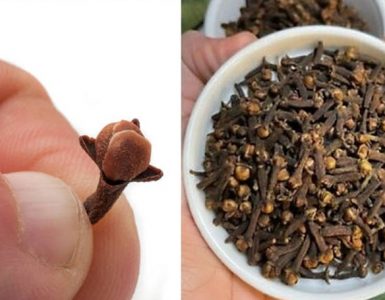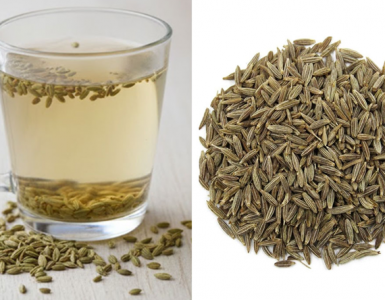Taro, scientifically known as Colocasia esculenta, is a tropical plant widely cultivated for its edible corms (root-like structures) and leaves. Native to Southeast Asia and the Pacific Islands, taro has become a staple food in many parts of the world due to its rich nutritional profile and versatility in cooking. Both the root and leaves of the taro plant are packed with health benefits and can be used in a variety of ways. Let’s explore the benefits and uses of taro.
Nutritional Profile of Taro
Taro is highly nutritious, containing a variety of essential nutrients, including:
- Carbohydrates: A great source of energy.
- Fiber: Promotes digestive health.
- Vitamins: Rich in vitamin C, vitamin E, and several B vitamins.
- Minerals: Contains potassium, magnesium, calcium, and iron.
- Antioxidants: Helps combat oxidative stress.
Health Benefits of Taro
1. Supports Digestive Health
Taro is an excellent source of dietary fiber, which promotes regular bowel movements and prevents constipation. It also supports a healthy gut microbiome by feeding beneficial gut bacteria, thereby improving overall digestive health.
2. Aids in Weight Management
The high fiber content in taro helps promote a feeling of fullness, reducing overall calorie intake. Additionally, its complex carbohydrates are digested slowly, providing sustained energy and helping to control appetite.
3. Boosts Heart Health
Taro contains significant amounts of potassium, a mineral essential for maintaining healthy blood pressure levels. Potassium helps counteract the effects of sodium, reducing the risk of hypertension. The fiber in taro also aids in lowering cholesterol levels, further supporting heart health.
4. Enhances Immune Function
Rich in vitamin C and other antioxidants, taro boosts the immune system by enhancing the body’s ability to fight infections. Antioxidants also help neutralize free radicals, reducing inflammation and the risk of chronic diseases.
5. Improves Blood Sugar Control
Despite being starchy, taro has a low glycemic index, meaning it causes a slower rise in blood sugar levels. This makes it a good option for people with diabetes or those looking to maintain stable blood sugar levels.
6. Promotes Skin Health
Taro contains vitamin E and other antioxidants that help protect the skin from damage caused by UV rays and environmental pollutants. These nutrients also promote skin regeneration and reduce the appearance of fine lines and wrinkles.
7. Supports Bone Health
The calcium and magnesium found in taro are essential for maintaining strong and healthy bones. Regular consumption of taro can help prevent bone-related conditions like osteoporosis.
8. Improves Vision
Taro is a good source of vitamin A and beta-carotene, both of which are crucial for maintaining healthy vision. These nutrients help prevent eye conditions such as macular degeneration and night blindness.
9. Provides Sustained Energy
The complex carbohydrates in taro provide a steady release of energy, making it an excellent food for athletes and those with physically demanding lifestyles.
Culinary Uses of Taro
Taro is a versatile ingredient that can be prepared in many ways. However, it is important to note that taro must be cooked before consumption, as raw taro contains calcium oxalate, which can cause irritation and is toxic if ingested.
1. Taro Corm (Root)
- Boiled or Steamed: A simple preparation method that brings out taro’s nutty, sweet flavor. It can be eaten as a side dish or mashed as a base for other recipes.
- Fried or Roasted: Taro chips and fries are delicious alternatives to regular potato chips.
- Taro Puree: A creamy base for soups, stews, and desserts.
- Taro Flour: Used as a gluten-free alternative in baking.
2. Taro Leaves
- Steamed or Boiled: Taro leaves can be cooked and used as a wrap for stuffing in dishes like laing (a Filipino dish) or lu’au (a Hawaiian dish).
- Sautéed: Combine taro leaves with garlic, onion, and coconut milk for a rich, flavorful dish.
- Soups and Stews: Add taro leaves for a nutrient boost and added texture.
3. Taro in Desserts
- Taro Bubble Tea: A popular beverage made with taro puree and tapioca pearls.
- Taro Ice Cream: Known for its unique purple color and nutty flavor.
- Taro Pudding and Cakes: Adds a distinct taste and vibrant color to sweet treats.
Other Uses of Taro
1. Traditional Medicine
Taro has been used in traditional medicine to treat various ailments, including skin conditions, digestive issues, and inflammation.
2. Animal Feed
In some regions, taro leaves and corms are used as feed for livestock due to their high nutritional content.
3. Natural Dye
The vibrant purple hue of certain taro varieties can be used as a natural dye for textiles and food.
Precautions When Consuming Taro
While taro is highly nutritious, it’s important to handle and prepare it correctly:
- Cooking: Always cook taro thoroughly to remove calcium oxalate, which can cause throat irritation or kidney stones in some individuals.
- Allergic Reactions: Some people may be allergic to taro. If you experience itching or discomfort after handling or eating taro, consult a healthcare professional.
Taro (Colocasia esculenta) is a versatile and nutritious plant with a wide range of health benefits. From supporting digestion and heart health to promoting healthy skin and bones, taro is a valuable addition to any diet. Whether enjoyed in savory dishes or sweet desserts, taro offers both delicious flavors and impressive health benefits. Give this tropical root vegetable a try and experience its many benefits for yourself!






Add comment